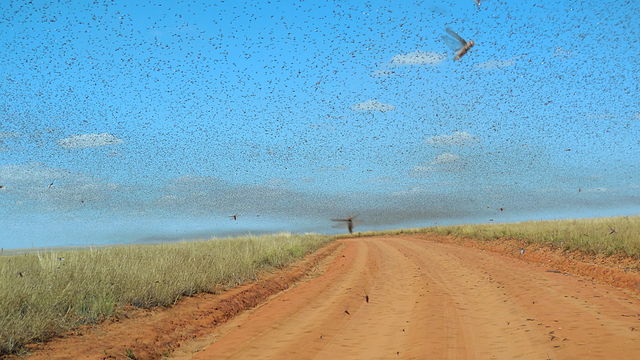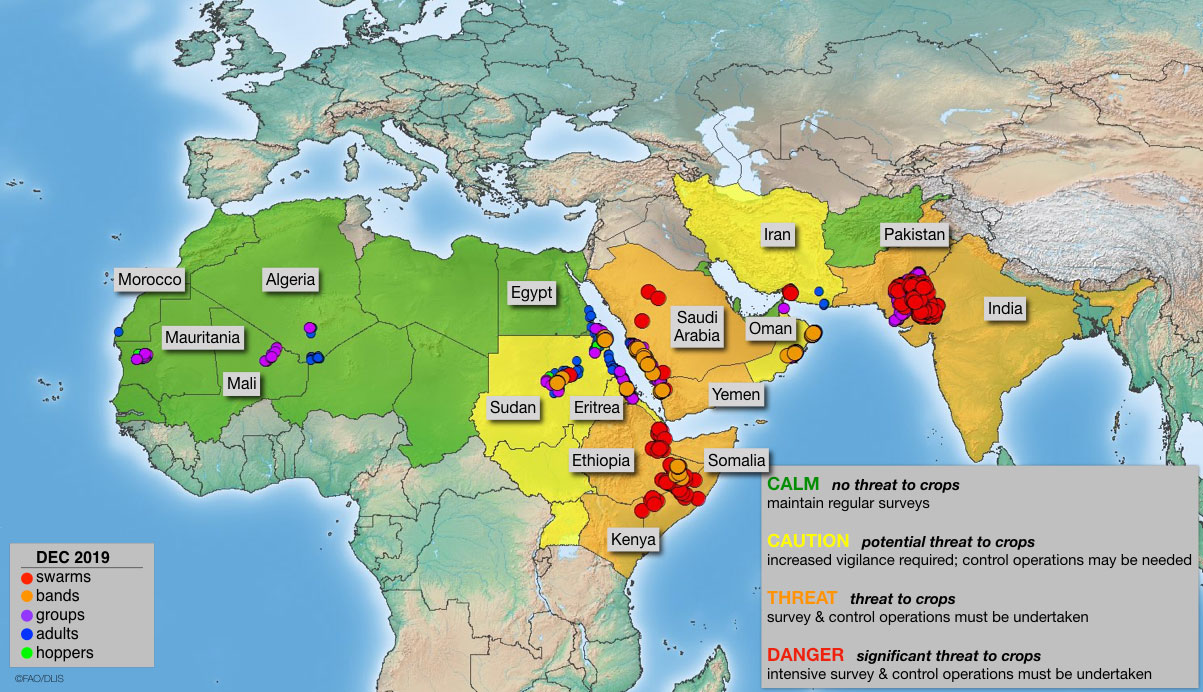 Swarms of bright yellow insects blanket the sky, devouring crops and plants in their path.
Swarms of bright yellow insects blanket the sky, devouring crops and plants in their path.
This seemingly Biblical scene comes from East Africa, where people are experiencing the worst locust outbreak in decades.
These yellow insects are desert locusts, a type of short-horned grasshoppers that travel in dense swarms. A single swarm can be as large as several hundred square kilometers and have 80 million locust adults per square kilometer!
The problem with these locusts is that they are consuming crops. Locusts like to eat plants rich in carbohydrates and one square kilometer of locust swarm can eat as much food per day as 35,000 humans.
Over 12 million people living in Ethiopia, Kenya, and Somalia are already experiencing a food shortage and the locusts are worsening their problem.
Why Do They Swarm?
 Desert locusts start as solitary creatures in the deserts of Africa, the Middle East, and southern and southwestern Asia.
Desert locusts start as solitary creatures in the deserts of Africa, the Middle East, and southern and southwestern Asia.
However, they thrive after heavy rainfalls for two reasons: first, the abundance of water allows plants to flourish, providing more food for the locusts, and second, locusts lay their eggs in moist soil to keep them from drying out.
Locusts breed at a rapid pace - one generation is three months and the population increases by 1900% each generation!
When the locust population becomes too large, they turn gregarious, meaning they gather into a swarm. Swarm locusts turn pink or yellow, grow bigger muscles, and migrate long distances -- as much as 80 miles in a single day!
What Caused The Recent Swarm?
 In 2018, there were two cyclones in the Arabian Peninsula, one in May and one in October. The extended rains from the cyclone (hurricanes) caused the desert locust population to grow to an astronomical number.
In 2018, there were two cyclones in the Arabian Peninsula, one in May and one in October. The extended rains from the cyclone (hurricanes) caused the desert locust population to grow to an astronomical number.
By the end of 2018, the locust swarms had already spread to southern Oman, and by January of 2019, they hit Iran and Yemen. A few months later, the locusts traveled across the Gulf into Somalia and then to Kenya and Ethiopia.
The Food and Agriculture Organization (FAO), based in Rome, Italy, monitors locust swarms, predicts where the swarm will travel, and alerts those countries. The organization sprays pesticides to kill the locusts, sometimes harming other organisms in the process.
A newer method of locust control is the fungus Metarhizium acridum which kills only locusts and grasshoppers, so other organisms will not be harmed.
As climate changes, scientists are concerned that shifting rainfall patterns could lead to more locust swarming and impact food supply. Locust swarms will stop once resources run out and they turn to cannibalism.
However, the recent swarms show no signs of stopping. The FAO has requested urgent funding and is warning that Africa could face famine this summer.
Sources: NYTimes, National Geographic, Mashable. FAO.org. DW, Wired







